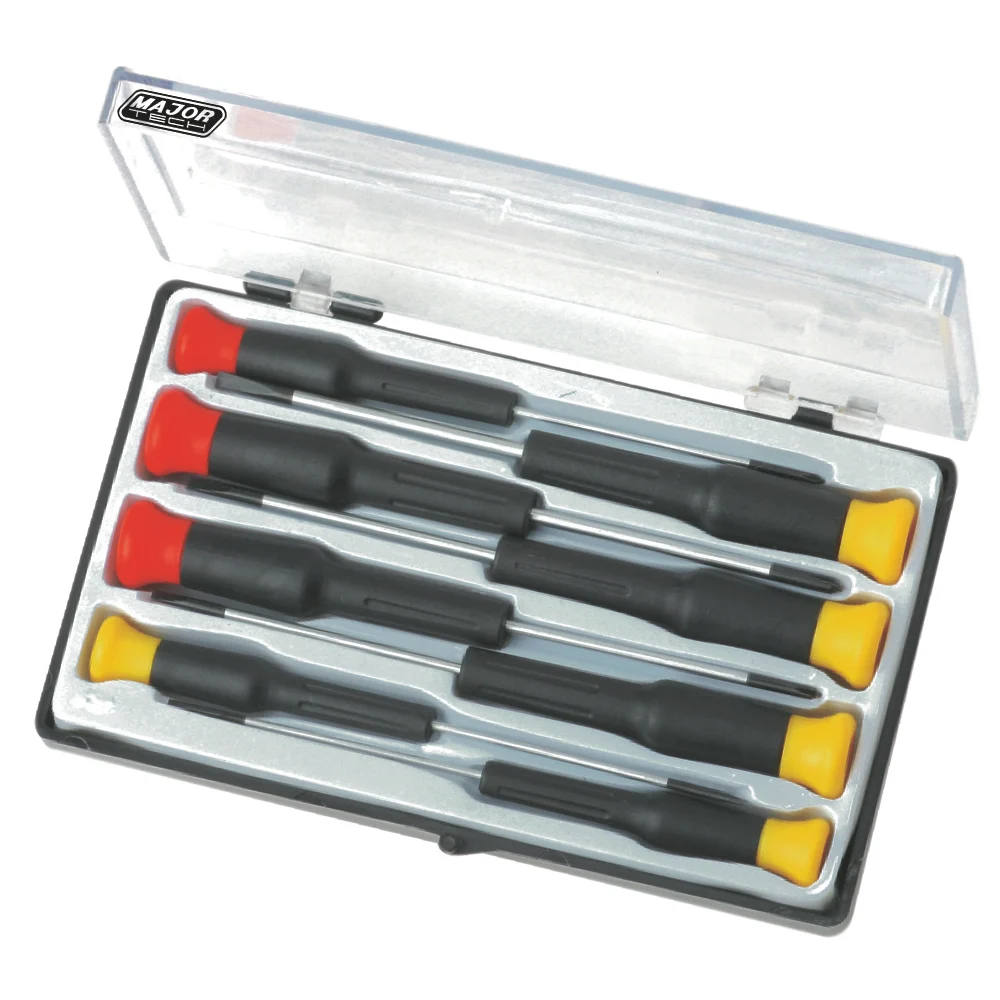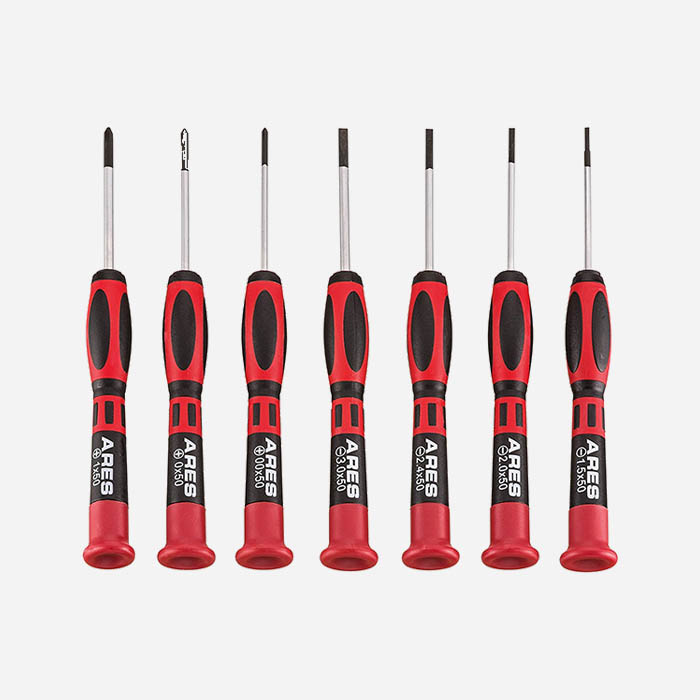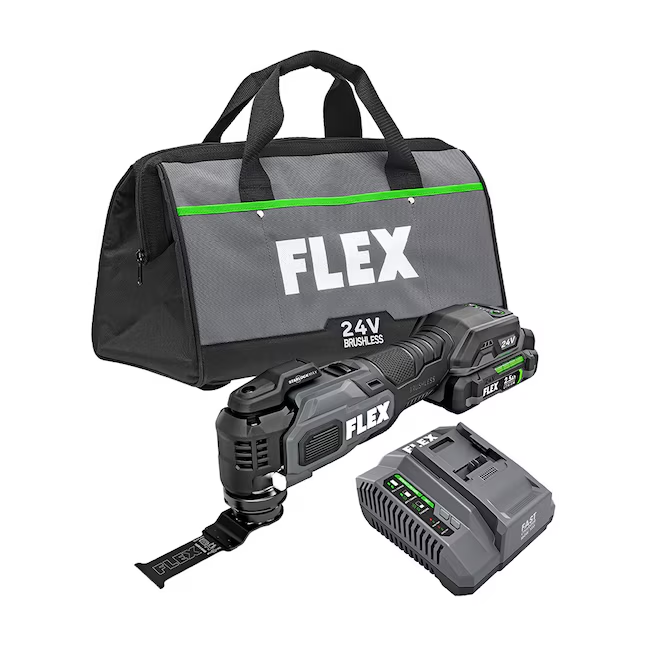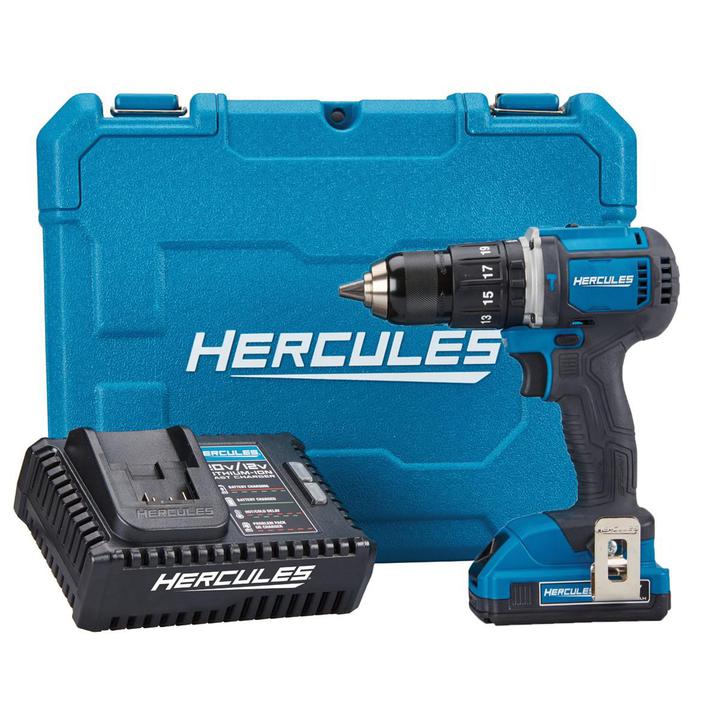
How to Use Precision Screwdriver: A DIY Guide Techniques
Introduction to Precision Screwdrivers
Precision screwdrivers are essential tools for delicate tasks. They come in various sizes and shapes, tailored for intricate work. Tech professionals, jewelers, and dedicated DIY hobbyists rely on these tools. Knowing how to use precision screwdriver sets is key to success.
Precision screwdrivers allow for accuracy and control. This makes them ideal for electronics, watches, and eyeglasses. They help prevent damage to small screws and delicate parts. A steady hand and the right technique ensure their effective use.
When starting with precision screwdrivers, recognize their unique features. They have small tips and slender handles for a precise grip. The rotating cap on the handle provides ease of use. It allows you to turn the screwdriver with your fingertips while applying pressure.
Before using a precision screwdriver, identify the screw head type. The common types are flat-head, Phillips, and Torx. Each type demands a specific screwdriver. Choosing the wrong one can strip the screw head or damage your tool.
To use a precision screwdriver effectively, work in a well-lit space. This will help you see the small parts better. Keep your work area clean and organized. This prevents losing screws or picking the wrong tool.
With this introduction, you are on your way to mastering the use of precision screwdrivers. Follow our guide for more tips and techniques to enhance your skillset.

Types of Precision Screwdrivers
In the world of precision tasks, the right tool is critical. Precision screwdrivers come in several types. Each serves a particular purpose. Popular types of precision screwdrivers include:
- Flat-Head Screwdrivers help with slotted screws. They fit into the single cut on the screw’s head.
- Phillips Screwdrivers have a cross-shaped tip. They work with screws that have a cross slot. You often see these in electronics.
- Torx Screwdrivers feature a star-shaped tip. This design is for screws with a six-point star. They’re common in tech gadgets.
- Hex Screwdrivers also known as Allen wrenches, fit hexagonal screws. They’re used in bikes and furniture.
- Precision Nut Drivers are for hex nuts and bolts. They come in handy during appliance repair.
The type you need depends on your project. For example, opening a phone requires a Torx screwdriver. Fixing eyeglasses may need a small flat-head. For model making, a mix of types might be best.
Knowing how to identify the correct precision screwdriver is a must. Always match the screwdriver tip with the screw head. This prevents slipping and potential damage. Look closely at the screw head. Choose a precision screwdriver that fits snugly.
It’s also useful to understand that precision screwdrivers vary in quality. Higher quality screwdrivers resist wear. They last longer, too. Consider this when buying for your projects.
A good set of precision screwdrivers is a solid investment. It ensures you can handle any small project that comes your way. Next, we’ll cover how to select the right precision screwdriver for your needs.
Selecting the Right Precision Screwdriver for Your Project
Selecting the right precision screwdriver is crucial for your project’s success. The key is to match the screwdriver tip to the screw head type. In doing so, you avoid damaging the screw or the device you are repairing. Here’s how to choose the right one for your task:
- Identify the Screw Head: Look at the screws you will work with. Find their type – flat-head, Phillips, Torx, or hex.
- Check Screwdriver Size: Precision screwdrivers come in various sizes. Use one that fits well. A tight fit protects the screw head and tool tip.
- Quality Matters: Choose screwdrivers made from high-quality materials. They should feel sturdy and reliable when you hold them. High-quality tools resist wear and provide better precision.
- Handle Design: A good handle allows for easy turning. Look for screwdrivers with rotating caps. They let you turn the tool with your fingertips. This gives you better control.
- Set or Single?: If you often tackle diverse projects, consider a set of precision screwdrivers. It will give you a range of sizes and types. For a specific job, a single precise match may be all you need.
Remember, accuracy guarantees the best results. Take your time when picking out a precision screwdriver. And always handle it with care. This will help ensure a successful outcome for your detailed projects.

The Essentials of Proper Screwdriver Use
To ensure the longevity and effectiveness of your precision screwdrivers, follow these essential usage guidelines:
- Maintain a Firm Grip: Hold the screwdriver firmly at the handle. Steady your hand for better control.
- Apply Consistent Pressure: While turning the screw, apply even pressure. This prevents stripping the screw head.
- Use the Correct Angle: Align the screwdriver tip with the screw head at a proper angle. This avoids slippage and damage.
- Turn with Precision: Turn the screwdriver slowly and deliberately. This ensures accuracy and avoids over-tightening.
- Do Not Use Excess Force: Avoid using more force than necessary. It can break the screwdriver tip or damage the screw.
- Replace Worn Tips: If a screwdriver tip wears out, replace it immediately. Worn tips reduce efficiency and can damage screws.
By adhering to these fundamentals, you’ll use precision screwdrivers successfully for various projects.
Tips for Maintaining Your Precision Screwdrivers
To keep your precision screwdrivers in top form, adopt these maintenance tips:
- Clean Regularly: Wipe your screwdrivers after each use. Remove dirt and debris.
- Avoid Rust: Store them in a dry place. Rust can damage the tips and handles.
- Inspect Tips Often: Look for signs of wear or damage. Replace tips that are not in perfect shape.
- Lubricate Moving Parts: If your screwdriver has a rotating cap, use light oil to keep it moving smoothly.
- Use Correctly: Only use screwdrivers for their intended purposes. Using them as pry bars or chisels can harm the tips.
- Keep Organized: Use a screwdriver set case or a tool organizer. This helps you find the right tool quickly.
By following these simple steps, you’ll extend the life of your precision screwdrivers. This means you can rely on them for many DIY tasks. Regular care pays off in performance and durability.
Common Mistakes to Avoid When Using Precision Screwdrivers
Even with the right tools, small errors can lead to big problems. Avoid these common mistakes to ensure you use precision screwdrivers correctly and safely.
- Using the Wrong Size: Always match the screwdriver to the screw head. A poor fit can damage both.
- Over-tightening Screws: This can strip the thread or damage the screw head. Turn carefully and stop when snug.
- Applying Uneven Pressure: Keep your pressure even to avoid slipping or damaging the screw.
- Ignoring Tool Quality: Cheap tools wear out faster and can harm your project. Use high-quality screwdrivers.
- Forcing a Screw: Never apply excessive force. If a screw won’t turn, there might be a reason.
- Neglecting Tool Care: Keep your screwdrivers in good condition. Clean and store them properly.
Remember these tips when using precision screwdrivers. With care and the correct use, your tools will last longer and your projects will turn out better.
Advanced Techniques for Professional Results
Achieving professional results with precision screwdrivers is about finesse and technique. Go beyond basics with these advanced strategies:
- Use a Magnetized Tip: This will help keep small screws in place, making them easier to handle.
- Employ a Screw Holder: A screw holder tool will help you prevent losing screws when working.
- Drill a Pilot Hole: If inserting screws into new materials, drill a small pilot hole first.
- Apply Thread Locker: To prevent screws from loosening over time, apply a thread locker.
- Practice Screw Identification: Become quicker at identifying screw types and sizes.
- Refine Your Technique: Work on applying even, gentle pressure and maintaining the right angle.
Master these techniques, and you’ll handle precision screwdrivers like a seasoned pro. Turn each screw with confidence and ease, knowing you have the skill to tackle delicate work.
Storing and Organizing Your Precision Screwdriver Set
A proper place for your tools keeps them safe and ready for use. For precision screwdriver sets, this is especially key. Small screwdrivers can easily get lost or damaged if not stored well. Here are effective ways to store and organize them:
- Use a Tool Case: Many precision screwdrivers come in their own case. Always put them back after use. This prevents loss and damage.
- Magnetic Strips: Hang screwdrivers on magnetic strips. This keeps them off work surfaces and easy to reach.
- Pegboards: Pegboards with hooks are great for hanging tools. They make it easy to see all your screwdrivers at once.
- Drawer Organizers: If you store your tools in a drawer, use dividers. This keeps each screwdriver in its own spot.
- Foam Tool Trays: Custom-cut foam trays hold each tool securely. They protect tips from bending or breaking.
- Labeling: Label the spots where each screwdriver goes. This helps you quickly find the one you need.
- Routine Checks: Regularly check your organization system. Make sure every tool is in its place.
Taking time to store and organize your precision screwdrivers pays off. It saves time and extends the life of your tools. Pull out the right screwdriver without fuss. Keep your workspace tidy and your mind clear for the task at hand. With these storage tips, you’ll maintain your set’s condition and make your DIY tasks smoother.

